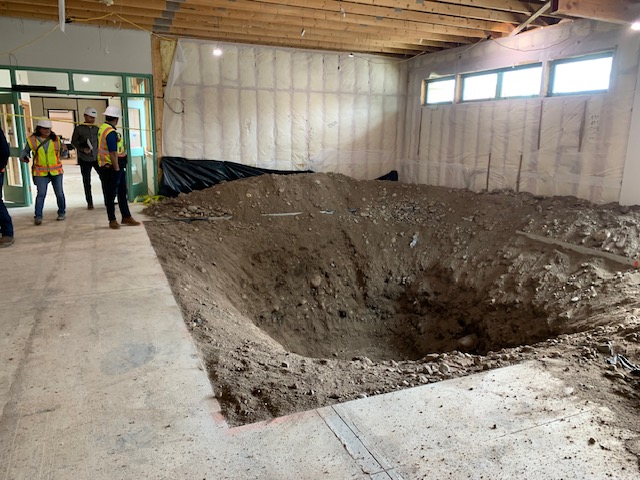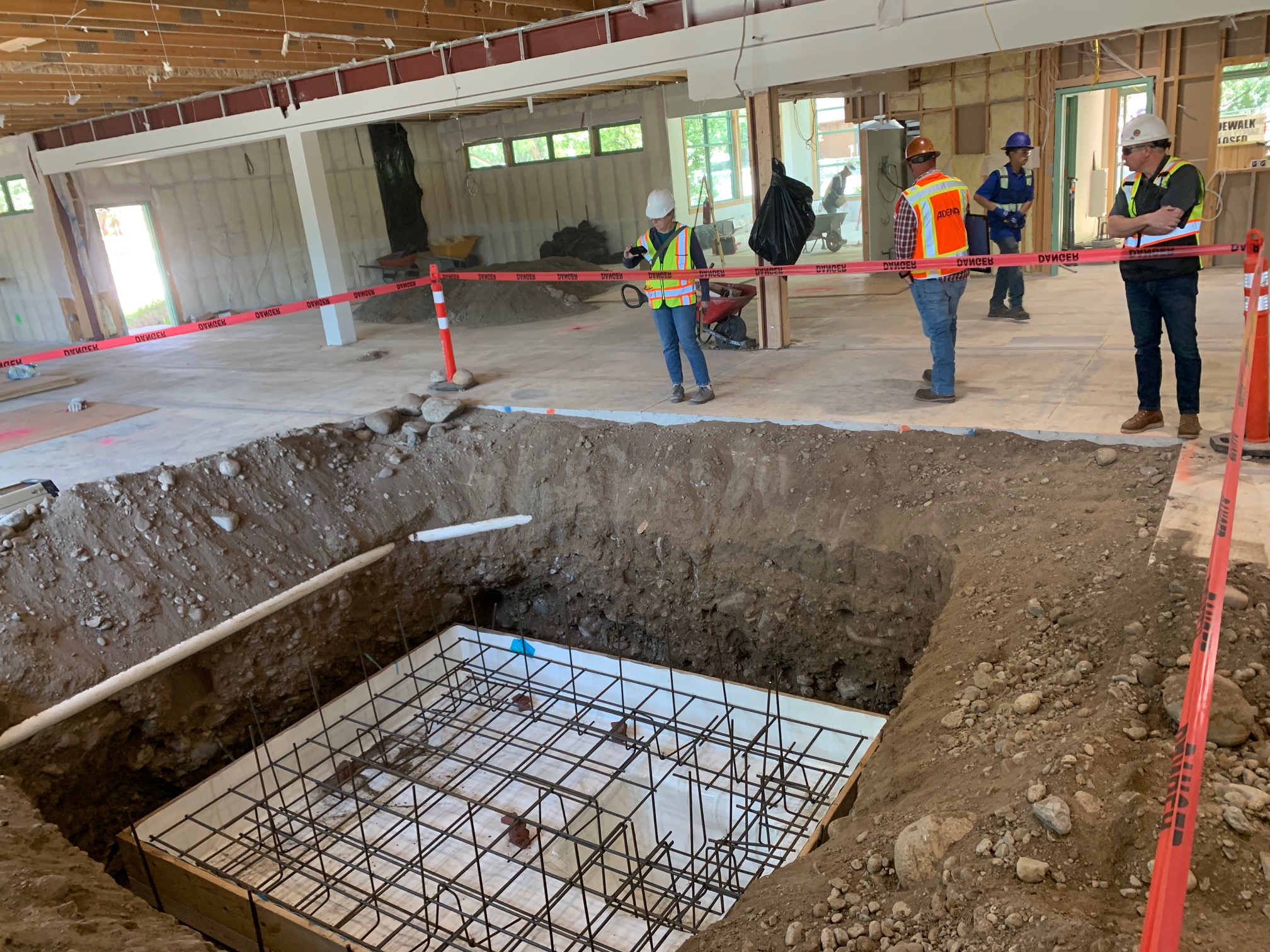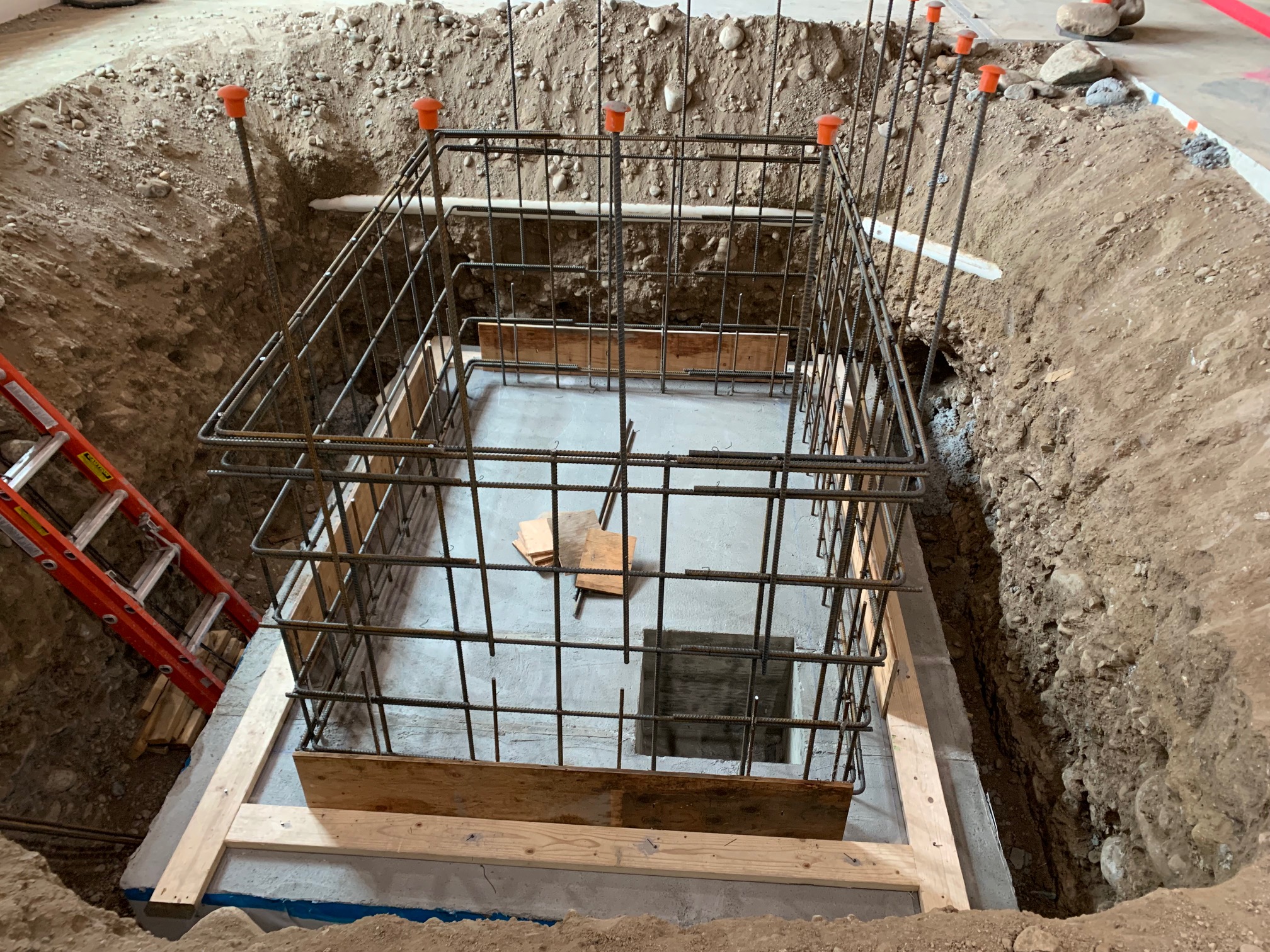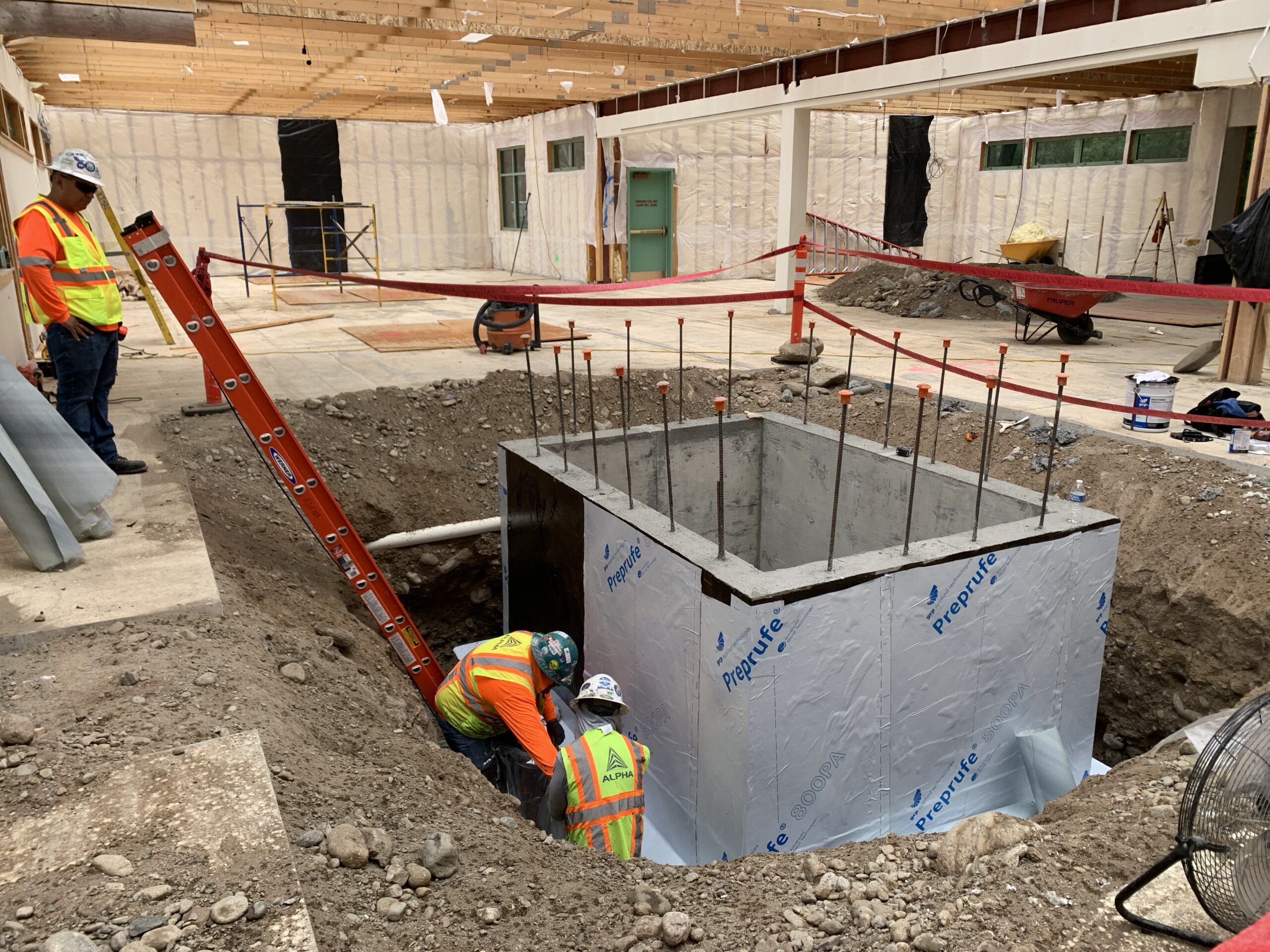E is for Elevator
by Cecilia LaFrance
One of the critical components of the Library expansion project is its elevator. Second to a question about parking, staff have reassured guests that there will be assistance to getting to our future second floor (in addition to stairs). Not only is an elevator a requirement for a public building with multiple floors, it’s a means of access, which is a fundamental principle of public libraries. As the Library adds the fourth passenger elevator to Buena Vista’s inventory, here are some tidbits of fascinating elevator table talk.
- The elevator is part of an architectural component called “vertical circulation,” which includes the stairwell.
- The Library elevator is a 7’ x 10’ hydraulic Endura model produced by TKE.
- The elevator can carry up to 2500 lbs. (That’s a lot of readers or a lot of books!)
- The required depth for the elevator pit is 5’, but a much deeper and wider pit was excavated to allow for sloped access and better backfill compaction. A waterproofing foundation was laid, reinforced with rebar, and filled with concrete to serve as the floor of the pit. The elevator pit will have a sump pump.
- This pit is located in what was formerly the children’s nonfiction area.
- The pit’s walls will be made up of 8” rebar-reinforced concrete. Once complete, masonry work brings the elevator shaft over 27’ high.
- A hoist beam will be installed at the top of the shaft.
- Top speed is 200 feet per minute.
- Elevator price tag: $119,000.
As the elevator progresses, so does the street-visible work. This is an exciting time in the project. To this point, the general contractor has kept the roof intact to protect the exposed frames and insulation, new wiring, and other vulnerable components from weather damage. But, with the elevator foundation poured, it’s time to clear the way for the elevator shaft. Off comes the roofing material and the trusses. Then, new steel supports can be dropped in, trusses and flooring for the second floor can be installed, and the second floor constructed.
In the design phase, much research went into the selection of the Library’s elevator. The choices were a lift, traction, or hydraulic model with or without a machine room. We want room for books and not a machine room; so that choice was easy. We also want access to the second floor to be convenient; so we avoided the lift models, which take extra time and provide a clunky user experience. A traction elevator has a lower upfront price tag, but a bit of research and some reference calls revealed some risk. Traction elevators are a newer technology, parts are more proprietary and susceptible to manufacturer availability and pricing, have a shorter lifespan than hydraulic elevators, and require an expensive part replacement 5-10 years into their use. We stuck with tried and tested technology with universal components that will hopefully have less financial burden on future operating budgets.
Now, our Library story includes an elevator, complete with a maintenance schedule, annual inspections, emergency procedures, and its own budget line in perpetuity.
Elevators serve as a unique setting element for fiction and film. Click to discover some book and movie plots with important elevator settings.
(Where are BV’s other elevators? The Surf Hotel, BV Heritage, BV Middle and High School.)
Reader Response Updates: Sunshine Manor was the first building in BV to host an elevator. And, the new CKS building also has an elevator.




